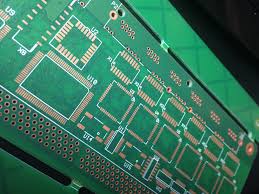Introduction
Surface Mount Technology (SMT) offers numerous advantages in PCB manufacturing, revolutionizing the way electronic devices are designed and assembled. In this article, we’ll explore the key benefits of SMT and its significance in modern electronics.
Miniaturization
Increased Component Density
One of the primary benefits of SMT is its ability to achieve higher component density on printed circuit boards (PCBs). By mounting components directly onto the surface of the PCB, SMT enables the design of smaller and more compact electronic devices.
Space Savings
The smaller size of SMT components allows for significant space savings on PCBs compared to through-hole components. This is particularly advantageous in applications where size constraints are critical, such as mobile devices, IoT sensors, and wearable electronics.
Enhanced Electrical Performance
Reduced Interconnection Lengths
SMT components feature shorter interconnection lengths compared to through-hole components, leading to reduced parasitic effects and improved signal integrity. This results in enhanced electrical performance, lower electromagnetic interference (EMI), and higher operating frequencies.
Better High-Frequency Characteristics
SMT technology is well-suited for high-frequency applications due to its reduced parasitic capacitance and inductance. This makes it ideal for applications such as wireless communication, RF circuits, and high-speed data transmission, where signal integrity is paramount.
Improved Manufacturing Efficiency
Automated Assembly
SMT assembly processes are highly automated, allowing for faster and more efficient production compared to through-hole assembly. Automated pick and place machines can precisely place thousands of components per hour, reducing assembly time and labor costs.
Higher Throughput
The high-speed nature of SMT assembly enables manufacturers to achieve higher throughput and production volumes. This scalability is essential for meeting the demands of mass production and ensuring timely delivery of electronic devices to market.
Cost Savings
Reduced Material Costs
SMT technology typically requires fewer materials than through-hole assembly, resulting in cost savings on PCBs and components. The smaller size of SMT components also reduces material waste and lowers overall manufacturing costs.
Lower Assembly Costs
The efficiency of SMT assembly processes translates into lower assembly costs compared to through-hole assembly. With fewer manual labor requirements and higher throughput, manufacturers can achieve significant cost savings in PCB production.
Conclusion
Surface Mount Technology (SMT) offers a multitude of benefits in PCB manufacturing, including miniaturization, enhanced electrical performance, improved manufacturing efficiency, and cost savings. With its ability to achieve higher component density, better electrical characteristics, and streamlined assembly processes, SMT continues to drive innovation in the electronics industry. To learn more about the benefits of SMT and PCB manufacturing, visit SMT.
